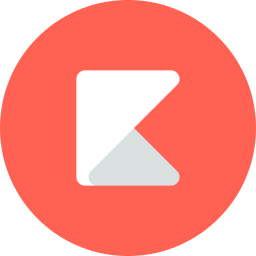
Kiddom
June 12, 2020

We had two special guests speak on a topic that has since become forefront to the nation’s attention: equity.
Joining us to lead the discussion were Traci Davis, who is an educational equity consultant (Open Up Resources) and former superintendent, and Jennifer Wolfe, an education advisor (Kiddom) and early advocate of open education resources.
As part of this ongoing distance learning webinar series, the focus of our discussion was equity within the context of remote learning. However, you’ll find a lot of helpful learnings here that apply to a broader context, particularly in the equity framework Traci shared.
These insights feel very relevant to the conversations happening in school communities nationally, as many educators are reflecting on their practices and asking themselves what they can do to combat systemic racism.
Kicking it off with an interactive question, Traci Davis asked attendees:
What song would you use to describe equity in your classroom and/or district and why?
For Traci, some days it’s “We are Family” (by Sister Sledge) when everything feels like it’s working out, and other days it’s “Y’all Gonna Make Me Lose My Mind” by DMX.
To close the activity, Traci instructed us to think about the song that came to mind, “and what we need to do to change that song, if we don’t like that song. And,” she asked us, “if you do like that song, what can you do to improve on it, as you look at equity, whether in your classroom, district, or in your everyday walk of life?”
Watch the video of this recap here:
Next, Traci took us through Curtis Linton’s equity framework around culture, practice, and leadership. She then offered some questions to think about within section, as follows:
Is there a positive culture in the district around equity?Is that positive culture in your class?
Are your practices meaningful?
Is leadership shared, not just for teachers, but for students?Do your kids have student voice?
Importantly, Traci shares, “we now have to wrap these questions into a larger circle of what these answers will look like now in a digital environment, when you can no longer see your students face-to-face or understand their moods.”

Next, Traci takes us to the center of this framework, where there are four components. For students to be successful in their learning outcomes, all four of these are needed to be successful:
Rigor
Expectations
Relevance
Relationships
For this section, she ended with another interactive question. “How do you refine or change your practices in a digital environment?” Responses from the audience included:
“Allow students to submit work in different formats.” -Jill
“I use a digital form for students to tell me how they are feeling and how they are doing each day.” -Laura
Watch the video of this recap here:
Next Traci brings fresh perspective to an image which many who have been doing equity work may have seen before. But in this version, as she points out, this lens of equity has evolved to become “just remove the fence.”
From this example, she implores us to ask ourselves, what new barriers will be faced in the digital environment?
If anything, added Abbas, the pandemic has really put the spotlight on the inequity problem across our education system. To that, he asked Traci how teachers could support each other’s practices right now, or utilize their PLCs (Professional Learning Communities) to ensure that their distance learning programs continue to iterate towards equity.
You can hear her response here:
Next, Traci gives us five considerations to think about as we reflect on our practices.

As she took us through this graphic, Traci reminded us that it might not be a brick-and-mortar situation we’re returning to in the fall. How do we ensure quality for every student, whether it’s brick and mortar, a hybrid, or a fully digital environment?
One thing is for sure, and that is, the equity conversation matters now more than ever. Traci then posed the questions: Do your students have the resources to be successful? And then, do your teachers have the resources they need to be successful?
“What does the new instructional day look like? There might be one laptop and three kids. How do we look at their scheduling so that every child has an opportunity? And that’s where we really have to work together as a team to address this work around equity in a digital environment.”
Watch the video of this recap here:
After Traci shared these five considerations and some closing words, our next presenter, Jennifer Wolfe, mapped some of those considerations to helpful features within the free Kiddom platform and Open Up Resources curriculum.
We hope this has helped you start to think about some new angles in your practice that can be improved upon or adjusted for more inclusivity and quality to all learners. As always, thanks for reading, happy teaching and learning.